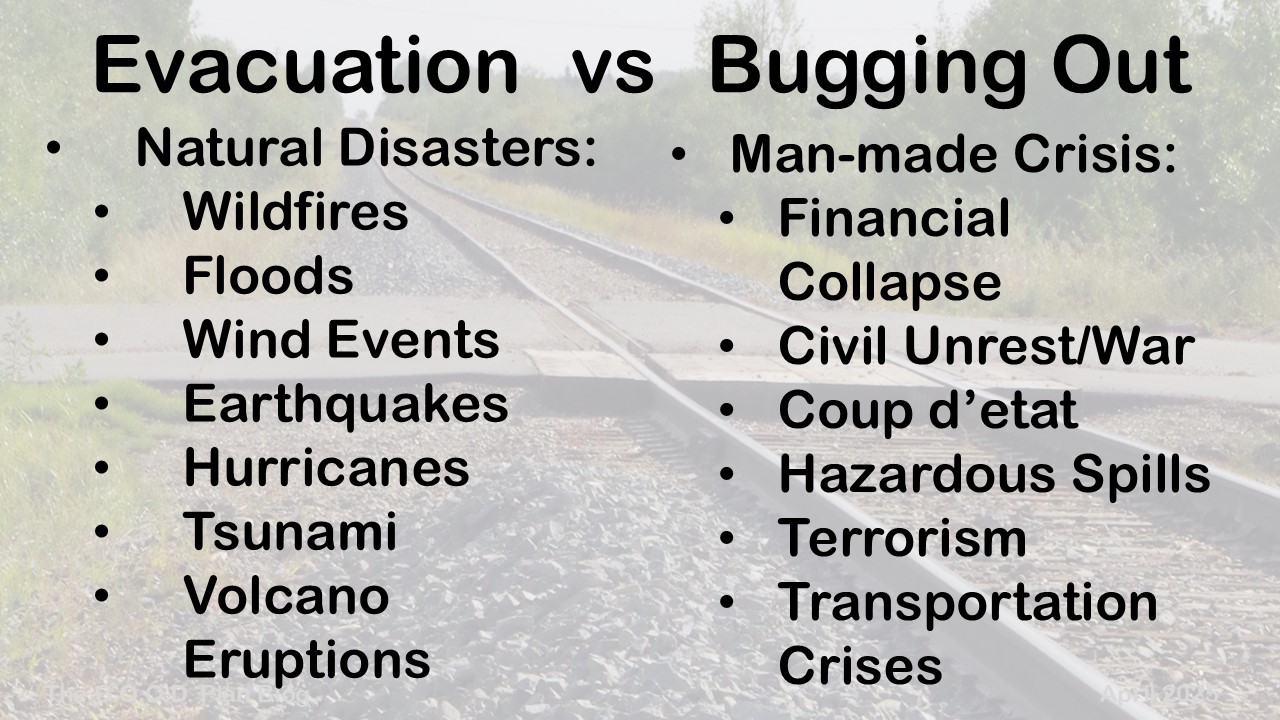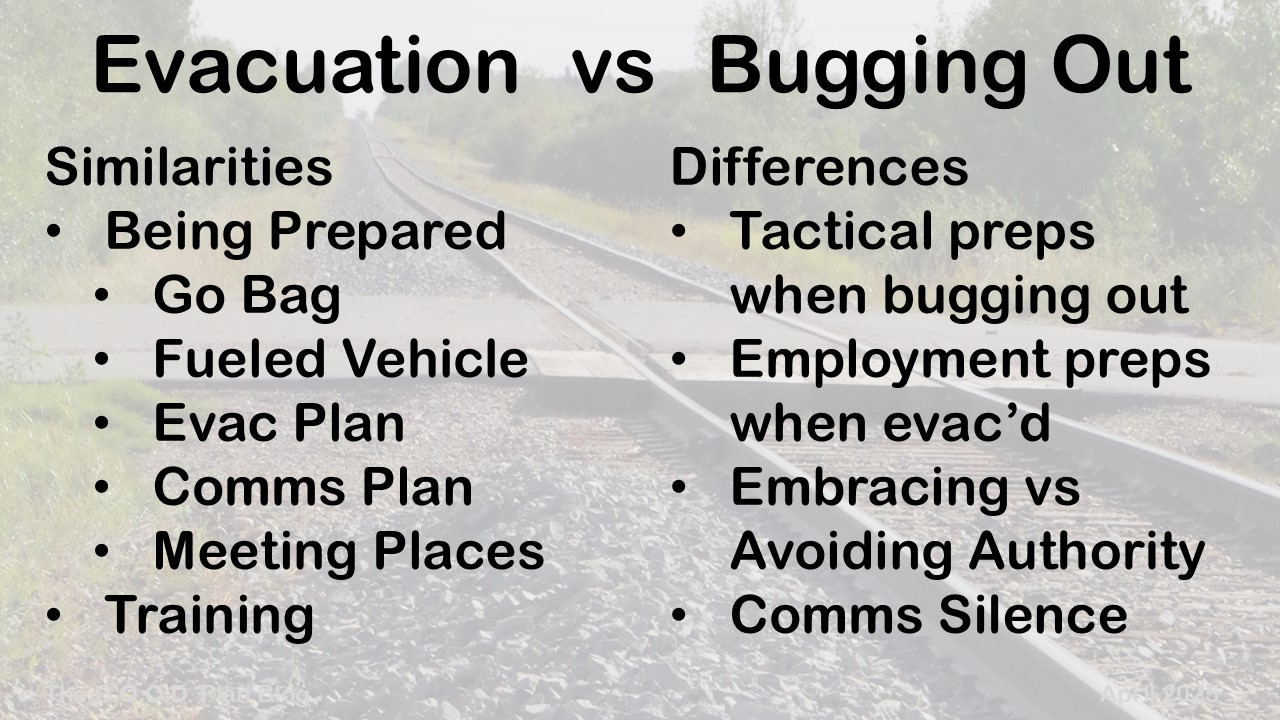 |
| Swan on the Winnipeg River (photo by V.A. McMillan, 2025) |
The GOOD Plan Blog
01 June 2025
An Evacuation Binder
Design
The time has come to
revisit important concepts when forced to evac your home due to threatening
events like wildfires, floods, or after an earthquake or tornado. The concept
of bugging out works well in a very finite scenario; however, there are more
likely events that could force us away from home, and likely on short notice.
These events will still retain some normalcy of law & order, thus we evac
instead of bug-out. Being evacuated has become frequently too common.
Enough preamble. What can
we do about it? Today, I want to share an organizational tool to fortify your
G.O.O.D. Plan. Yes, you could buy what I am about to suggest, a something that
is pre-made and pre-packaged. But, why?? The evacuation binder or evac binder,
is a high priority piece of kit. My original concept for The G.O.O.D Plan
– Get Out Of Dodge, was a binderedition that would provide a space to keep your G.O.O.D. Plan and
supporting documents in one place. This is a very good idea and can be achieved
with a standalone binder.
Where to start:
- Ø 2”
to 3” Zippered 3-ring binder (Purchase during back-to-school sales in August)
- Ø 8-tab
subject dividers
- Ø Business
card holder pages for 3-ring binders
- Ø Portable
digital storage device(s) – think USB drives, SD cards, External HD, SSD
- Ø Page
protectors – letter size
- Ø Select
hard copies of documents
First
caveat is the binder needs to be made tough
enough to get thrown in the back seat of your evac vehicle without exploding
the contents all over the seat and floor. Thus, a fabric covered, zipper
closing 3-ring binder. The size of the binder depends on how large your family
is and how many hard-copy documents you decide to carry. 2” or 3” are common
sizes and have a large carrying capacity.
 |
| 2" Zippered Binder (photo by V.A. McMillan) |
Binder design features to
seek:
Ø Full
fabric coverage, with minimal openings for water, dust/sand, or snow to get
inside.
Ø Locking
zipper pulls would be an advantage to keep the binder closed. A small luggage
lock could be used or a small carabiner to keep the pulls together. This is not
going to be an effective security method from thieves but might prevent and
exploding binder at the most inopportune time.
Ø Carrying
handle on the binder spine and/or D-rings to attach a shoulder strap. Either
make grabbing your evac binder during an evac easier.
Ø External
zippers file folder pocket. This will allow for a convenient location to
collect and organize receipts, contracts, agreements, permits, or licenses
during the evacuation. You will need these later for insurance claims or
re-entry purposes after the evac.
Ø External
zippered pocket for miscellaneous items that need to be close at hand – keys to
storage lockers, swipe cards for buildings, parking passes or toll road cards.
Ø Inside
the binder, locking rings for the 3-ring binder would be nice.
Ø Interior
zippered pocket(s) to hold digital storage devices. Padded would be nice. Space
for spare USB cables/Lightning cables/External drive cables/CAT cable.
Ø Velcro
loop panels to attach item with Velcro hook tape.
If you search YouTube,
you will find there are many ways or methods for organizing your Evac Binder. I
will provide a simple method of organizing, and you are free to use it or
decide to use a method that works better for you. The important part is to
create an Evac Binder and have it ready to use, NOW.
There are four main
subject areas, with some subdivision of those topics plus space for storing
your FamilyEmergency Plan. Remember the three parts of a Family Emergency Plan include
a S.I.P., G.O.O.D., and an I.N.C.H.
Evac Binder Subjects:
- Ø Personal
- Ø Financial
- Ø Medical
- Ø Legal
Personal
includes:
- Ø Personal
Identification – Birth Certificate, Passport, Driver’s License, Marriage
License
- Ø Social
Insurance Card, Medical Card, Student ID, Library Card, Auto Club Card
- Ø Education
Proofs – Diplomas, Degrees, Trade Certificates, Red Seals, First Aid Tickets
- Ø Transcripts,
Course Certificates, Letters of reference, Resume or Curriculum Vitae (CV)
- Ø Employment
ID – Military ID, Business Access Card, Building ID Card
Financial
includes:
- Ø Bank
account details and bank/ATM card(s)
- Ø Credit
card(s)
- Ø Insurance
policies and insurance agent contact info
- Ø Investments
and agent contact info
- Ø Household
contents list (pics and videos room-by-room)
- Ø Loans,
mortgages, and other debts
- Ø Receipts
of high value items and serial numbers (Proof of ownership)
- Ø Inventory
of precious metals – silver, gold, platinum (coin, bullion, wafers)
Medical
includes:
- Ø Personal
medical history, copy of your medical file, journal of medical visits
- Ø Family
doctor contact info, medical specialist(s) contact info, Dentist contact info
- Ø Copies
of X-rays, MRIs, CAT scans, etc.
- Ø Family
medical history. What runs in the family? Heart disease? Cancer? Blood issues?
Legal
includes:
- Ø Property
deeds, rental agreements, registration certificates for vehicles, RVs, boats,
toys
- Ø Last
Will & Testament
- Ø Power
of attorney, Living Will, other legal agreements/contracts
- Ø Contact
info for your legal representative
- Ø Taxes
– income taxes, property taxes, business taxes [Or can be part of Financial]
Family Emergency Plan
includes:
- Ø Contact
List (phone numbers, email addresses, and mailing addresses)
- Ø S.I.P.
(Shelter-In-Place) Plan
- Ø G.O.O.D.
(Get Out Of Dodge) Plan
- Ø I.N.C.H.
(I’m Never Coming Home) Plan
Augmentations
include:
- Ø Family
photos, videos, and/or slideshows (keep a digital copy on a digital storage
device)
- Ø Family
History/Genealogy/Family Tree (if young children are the sole survivors this
info is very valuable, first for finding living relatives and second when those
kids grow up, they will know where they came from.)
- Ø Digital
storage device(s) to hold digital copies of every document, picture, video, certificate,
or any other item that can assist rebuilding life after a disaster.
- Ø Spare
keys/access cards – home, vehicles, and/or storage – safety deposit box,
storage unit
- Ø Password
management – hard copy list of APPs, accounts, usernames & the associated passwords.
Security questions and hints.
- Ø CASH
at least $500 and work towards $2000 in cash in the Evac Binder. This is
two-fold. One, it holds a supply of emergency cash to use during an evacuation.
Second, this cash will help ensure your Evac Binder is properly protected
before an emergency and will be remembered to be taken with you if/when you are
ever evacuated. One suggestion online was to store the Evac Binder in a
firearms safe…preferably, the safe near an exit.
Final thoughts…
Evac Binder Strategies
- Ø If
you are following through to craft one binder…do yourself a favour and make a
second copy that is stored at least five-hours driving time away from your current
location or further away. Update once a year. This backup copy would only hold
copies – digital and some hard copies of critical documents. This backup could
be stored at a trusted friend or family member’s place or at a bank with safety
deposit boxes.
- Ø Have
a schedule for updating your primary (& secondary) Evac Binder contents. At
least once a year. At least update the family photos on the digital storage
devices. Alternately, update around the same time you rotate the items in your
personal “Go Bag”
- Ø Print
and laminate the prioritizedevacuation checklist. Keep the checklist near the exit point from your home…Velcroed
inside a closet or back of a door.
- Ø Train
your Evac Binder. Each person in your household should know where the Evac
Binder is stored and should know what kind of information is saved inside.
Train it! Review it! Update it! Practice it, again…and again. At least
annually, until it is second nature. Test your passwords or personal contact
list phone numbers or emails, at least once a year to ensure they are still
valid.
 |
| Go Bag, Evac Binder, & The GOOD Plan (photo by V.A. McMillan, 2025) |
This
is just the primer. Now, it is up to you to accept this mission and build an
Evac Binder for your family and your family’s survival during everyday crises
or larger emergency or disaster events. Unlike other preparedness tasks like
stockpiling a year’s worth of food, the tools to build a cabin in the woods, or
an apocalypse vehicle; an Evac Binder…YOUR EVAC BINDER is something you can do.
Right now! It will take time to collect, scan, copy, and compile the contents
of your Evac Binder, but you can start today. You don’t even need a zippered
binder at the start. If you have ever been evacuated, I know I do not have to
speak any longer, you are on it!! For those who have never been evacuated, you
will thank yourself for investing your time, now, to be ready for tomorrow.
Stay
prepared!
VAM
Further
reading:
Adapt.Improvise. Overcome. Survival Mindset.









